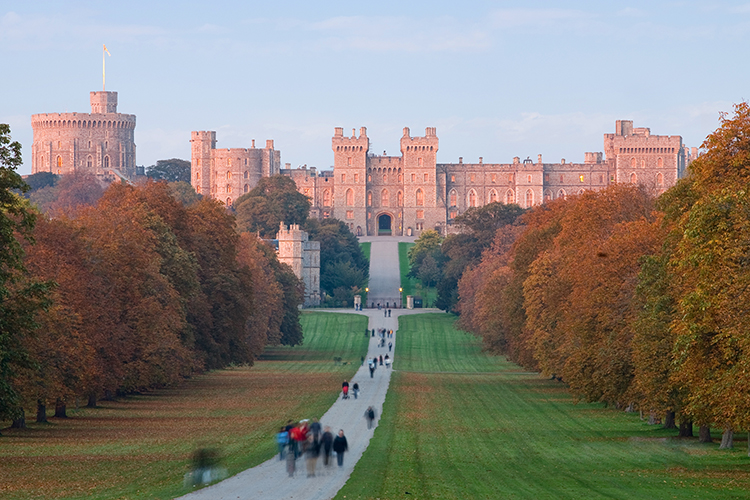
Sunset view up the Long Walk of Windsor Castle. (Photo: Diliff via Wikimedia Commons [CC BY-SA 3.0])
Nestled into a charming small town in the British countryside is Windsor Castle—the oldest continually occupied castle in the world. It is also the largest castle in which people still live and work. Thousands of tourists a day flock to visit the staterooms, chapels, and rolling grounds open to the public. Behind these public scenes, the castle contains extensive private grounds and royal apartments fit for a Queen. Her Majesty Queen Elizabeth II spends most of her weekends at the beloved castle and even quarantined there with her husband Prince Phillip.
Like any tourist attraction, there are gift shops, guide ropes, and countless guidebooks to read. Wandering Windsor, you can't take your eyes off the opulent gilding and imposing portraits. The magnificent castle, which has housed 39 British monarchs, has a history stretching back 900 years to the days of William the Conqueror, the first Norman King of England. Many centuries later, the British royal family changed their operative surname to “Windsor,” becoming known as the House of Windsor in 1917.
Why is Windsor Castle such an important piece of British history? Read on to discover the history of one of the world's most famous castles.
Medieval Foundations
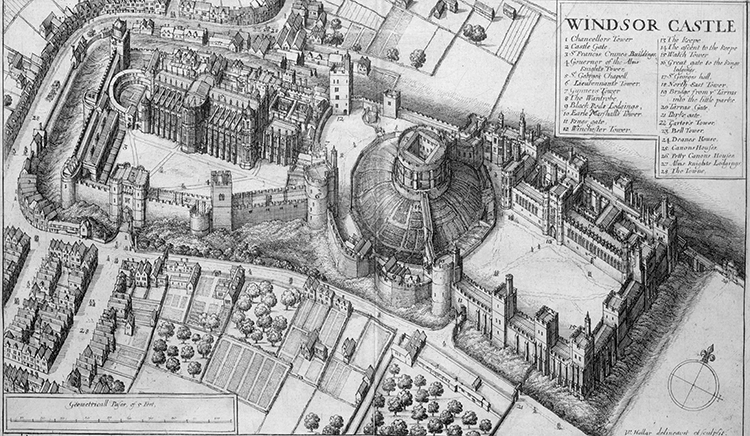
Windsor Castle in 1658, by Wenceslas Hollar. [Photo: Wikimedia Commons [Public domain])
The Norman noble William the Conqueror swept into England in 1066, beginning a process of dominating and uniting the smaller kingdoms he encountered. William I, as he came to be known, was a military king. Like most medieval castles, Windsor Castle originated from a defensive need. The location of the present-day castle was chosen for its proximity to the Thames River and to guard the western approach to London. The military fortress was made of wood and constructed in the motte-and-bailey style. In this style, a strong keep (central building) stood upon a central raised mound, surrounded by a walled and barricaded courtyard. The castle also happened to border a forest rich in hunting—considered a kingly sport.
A defensive structure, the Norman kings did not reside at Windsor Castle until Henry I held a celebration there in 1110. By mid-century, the wooden structure was in poor shape, so Henry II began to transform the wooden building into one of solid stone. He began in the 1170s with the Round Tower, a structure which still stands (modified later) today on the sight of the early keep. The king also added other stone buildings surrounding the courtyards, including towers and gates. The castle was still of military use and suffered damages during the revolt of the English Barons against King John of Magna Carta (and Robin Hood) fame.
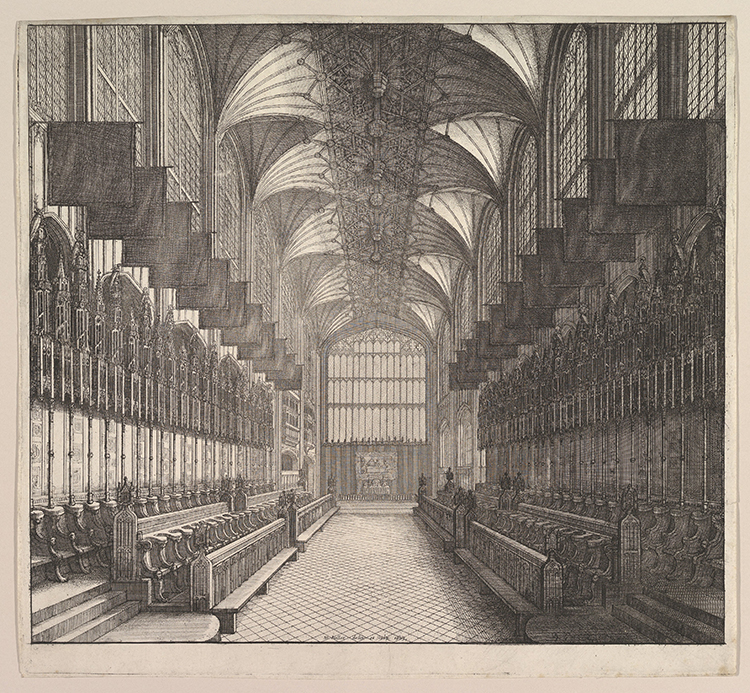
St. George's Chapel, etched in 1663 by Wenceslaus Hollar, published in Elias Ashmole's “The Order of the Garter,” 1672. [Photo: The Metropolitan Museum of Art [Public domain])
A Royal Palace Without a King

Watercolor with Windsor Castle in the distance by David Cox Junior, 1834. (Photo: © The Trustees of the British Museum [CC BY-NC-SA 4.0])
By the mid-17th century, the authoritarian ambitions of the Stuart King Charles I lead to intense tensions—politically and religiously—between opposing factions. The Royalists (backing the king) and the Parliamentarians (or Roundheads, backing Parliament) met in battle in 1642 beginning the Civil War. The Parliamentary forces which held London also took control of Windsor Castle, valuable for its defensive position with regard to the capital. Soldiers looted valuables, while the army quartered prisoners in the castle. The king himself found himself a prisoner there. Charles I was the first and only British monarch to be put on trial by his subjects. He was convicted and executed, then buried in St. George's Chapel. For the first time, Britain was without a king, as the heir had been forced to flee to the continent.
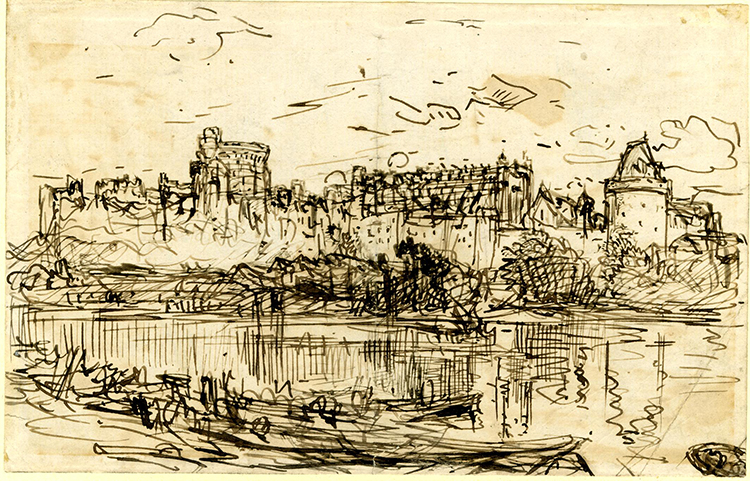
Sketch of Windsor Castle from the river by Alfred William Hunt, between 1830 and 1896. (Photo: © The Trustees of the British Museum [CC BY-NC-SA 4.0])
Becoming the Castle of Today
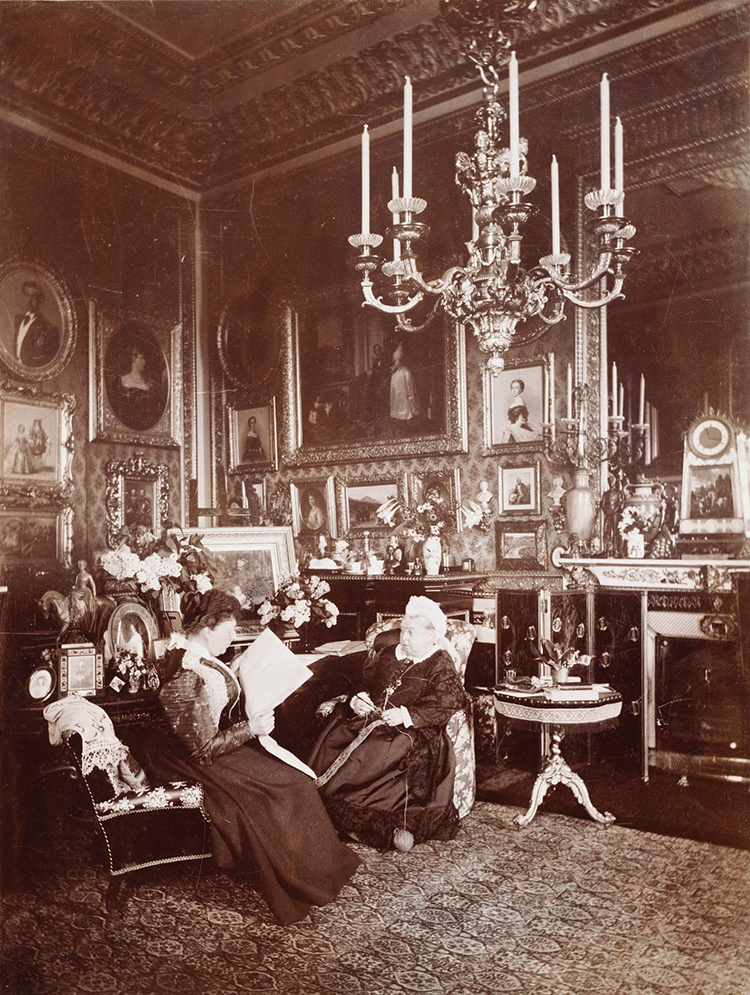
Queen Victoria and Princess Beatrice at Windsor Castle, photographed by Mary Steen in 1895. (Photo: Wikimedia Commons [Public domain])
Queen Victoria—the second longest-reigning British monarch after the present Queen—spent much of her time at Windsor Castle, particularly after the death of her beloved husband Prince Albert. She constructed a mausoleum for his resting place on the grounds as one of many tributes she built to his memory. Queen Victoria paid particular attention to the grounds—planting trees and renovating outer buildings. Many of these buildings supported the castle and its staff, while others were (and remain) royal residences for relatives of the sovereign.
In the early 20th century, Edward VII and George V brought modern amenities to Windsor. Under the latter's rule, the Royal Family decided to take their name from the castle, dropping the German moniker which reminded the populace of their relation to the enemy in World War I. Among the additions one can find at Windsor Castle from this period are the extravagant, custom made dollhouses of George V's consort Queen Mary. Among the tiny items on view are royal dinner services, readable books, and even bottles of champagne. Like many treasures, they are now held by the Royal Collection Trust and on display to the public.
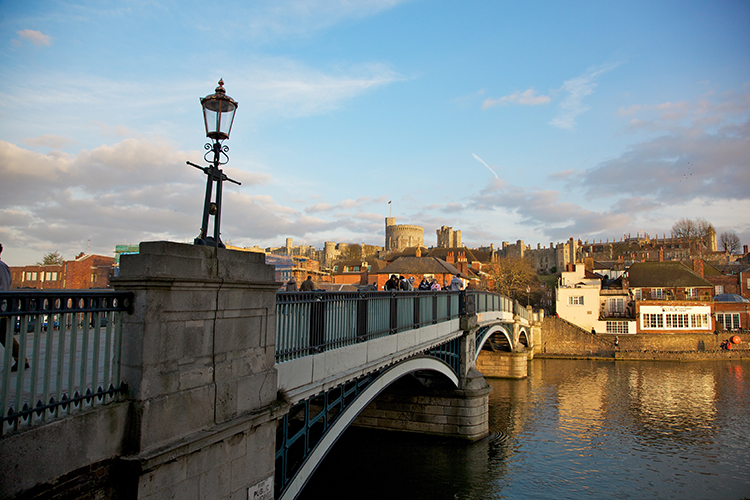
View of Windsor Town with the Round Tower visible. (Photo: Aurelien Guichard via Wikimedia Commons [CC BY-SA 2.0])
Today, Windsor Castle allows Brits and people from around the world the opportunity to explore the nine centuries of history contained within its walls. The Round Tower even has tours where visitors can climb the stairs to the top to take in the view. At present, the building also holds The Royal Archives, visitors will find treasures on view all over the castle; they'll leave feeling like they just traveled back in time.
Can't wait to visit Windsor Castle? Check out their digital collections for sneak peeks of the luxurious interiors. The video below will transport you back in history.
Related Articles:
Discover the Intriguing History of an Unusual Castle Built
Discover the Intriguing History of an Unusual Castle Built into the Side of a Cave
Enchanting ‘Lichtenstein Castle’ Is a Real Life Fairy Tale You Can Visit
‘UK’s Smallest Castle’ is a Charming 1-Bedroom Manor That’s Now for Sale






















































































